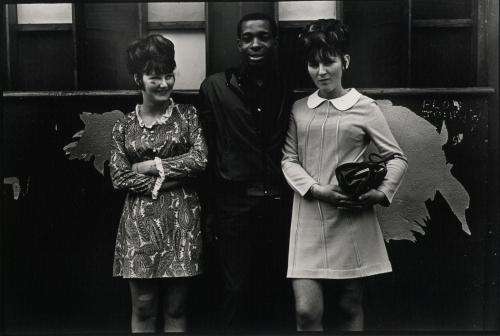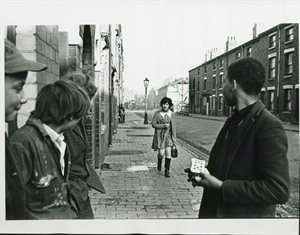Sex marks the spot – treasure trove of images reveal life in 1960s red light district

Previously unseen images have laid bare the lives of sex workers in the city in a University of Birmingham research project. The study will continue investigations into a photographic archive thanks to funding from the Arts and Humanities Research Council.
The research is focused on the lives of sex workers in the Balsall Heath area in the 1960s. During this period there were around 200 sex workers in one square mile radius, but the family and social lives of these women have gone unrecorded until now. Many of the women worked in the front rooms of terraced houses rather than on the streets, with one road being known as the 'wickedest road in Britain'. In the 1990s a project was started to turn around the community which forced the sex trade out of the area and significantly reduced crime rates.
The images were taken by Janet Mendelsohn when she was a student at the world-renowned Centre for Contemporary Cultural Studies (CCCS) at the University of Birmingham. Under the guidance of Professor Stuart Hall, Mendelsohn documented the daily lives and experiences of people living and working in one of Britain's biggest red light districts.
More than 3,000 images were taken, plus interviews conducted with her subjects that paint a unique snapshot of the Balsall Heath area of Birmingham in the 1960s. They offer a glimpse into the domestic arrangements, personal relationships and everyday experience of sex workers in the area.
The photographs were discovered in Mendelsohn's basement in Massachusetts, US by Professor Matthew Hilton and Dr Kieran Connell of the University of Birmingham. The images have since been donated to the University of Birmingham's Cadbury Research Library to become part of the CCCS archives.

Dr Kieran Connell, a Research Fellow in the School of History and Cultures at the University of Birmingham, said: 'Janet Mendelsohn's photographs not only offer a remarkable snapshot into life in 1960s Birmingham, they also provide a unique insight into the development of cultural studies, something that started in this city in 1964 but has since become a discipline that is practised all over the world. The images help put the experiences of sex workers in the broader context of the time. They show them interacting with immigrants, in pubs and in their domestic settings, offering a previously unseen insight into their daily lives.'
The project will allow new audiences to engage with this previously unseen archive of material. In collaboration with other project partners, including Some Cities, Ort Café, Flat Pack Film Festival, the Library of Birmingham and Ikon, a series of events will be taking place across Birmingham in 2015. This includes a 'pop up' exhibition, photography workshops and discussion events, and culminates in a major exhibition of Mendelsohn's work at the Ikon Gallery.
The project is overseen by the Centre for Modern British Studies, a research centre at the University of Birmingham which is committed to engaging with the wider Birmingham public to study the recent past.
Matthew Hilton, Professor of Social History at the University of Birmingham said: 'These photographs will allow Birmingham's residents to reflect on some quite extraordinary scenes of everyday life and to think about how far Balsall Heath has come since the time they were taken.'
Provided by University of Birmingham

















